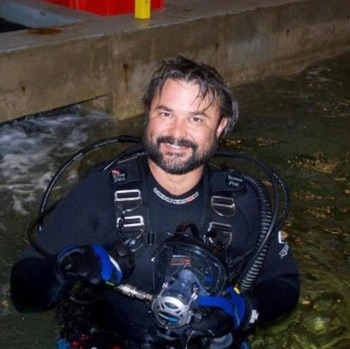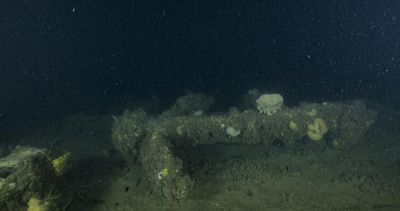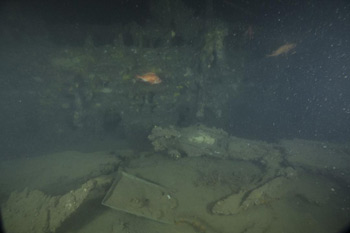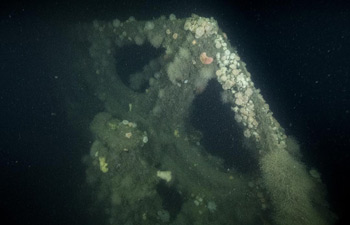Lost Passenger List Creates New Law

A model of the SS Portland passenger ship. Credit: Cape Cod Maritime Museum
If it takes a storm to pass a law for future safe passage, so be it. But it’s sad that lives must be lost in the process. A countdown to lives lost in a disaster at sea is the major issue here. What was the count, 160 or 190 lives lost and who were they? There was no manifest of passengers and crew in port. The only record available, along with the log, went down with the ship. Therefore, history will never reveal this important statistic and the captain’s last words.
In 1890 the Portland, Maine, Steam Packet Company chartered the sidewheel passenger steamer SS Portland for its overnight service between Portland and Boston, Massachusetts, on which she made an eight-year run before disaster struck. At about 7 p.m. on November 26, 1898, the Saturday after Thanksgiving, the well-

Dr. Calvin Miers will return to the SS Portland in an ROV. Credit: Marine Imaging Technologies
Two vessels reported seeing the Portland in Massachusetts Bay, a sign that it had left port that evening as scheduled. The captain failed to turn the ship around and it foundered in the wind and waves off Cape Ann (30 miles from Boston) and sank in 500 feet of water. The exact location has not been disclosed to keep souvenir hunters away. But at this depth there wouldn’t be many divers eyeing the sidewheeler which is best seen by ROVs (remote operated vehicles).

The anchor lays across the deck of the SS Portland. Credit: Marine Imaging Technologies

Red fish cross the deck of the wreck. Credit: Marine Imaging Technologies
Scientists and researchers in ROVs explored the wreck in the 842-square-mile federally protected area named Stellwagen Bank National Marine Sanctuary. It’s at the mouth of the Massachusetts Bay and Cape Ann, about 30 miles from Boston. This area is known for whale watching and is home to many other species of marine life, some of which visit the wreck.

The remains of the paddle wheel of the SS Portland. Credit: Marine Imaging Technologies
For further information, contact: capecodmaritimemuseum.org then go to Discover. Or go to: Stellwagen Bank National Marine Sanctuary/NOAA.
Author: Ellsworth Boyd
Ellsworth Boyd, Professor Emeritus, College of Education, Towson University, Towson, Maryland, pursues an avocation of diving and writing. He has published articles and photo’s in every major dive magazine in the US., Canada, and half a dozen foreign countries. An authority on shipwrecks, Ellsworth has received thousands of letters and e-mails from divers throughout the world who responded to his Wreck Facts column in Sport Diver Magazine. When he’s not writing, or diving, Ellsworth appears as a featured speaker at maritime symposiums in Los Angeles, Houston, Chicago, Ft. Lauderdale, New York and Philadelphia. “Romance & Mystery: Sunken Treasures of the Lost Galleons,” is one of his most popular talks. A pioneer in the sport, Ellsworth was inducted into the International Legends of Diving in 2013.
1 Comment
Submit a Comment
All Rights Reserved © | National Underwater and Marine Agency
All Rights Reserved © | National Underwater and Marine Agency
Web Design by Floyd Dog Design
Web Design by Floyd Dog Design

Whether maritime, aeronautical, or terrestrial, we continue to respond to disasters a little too late or in some cases not at all.